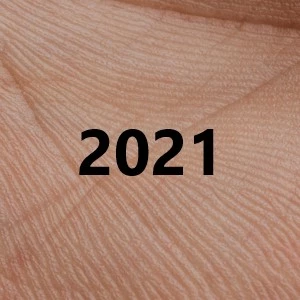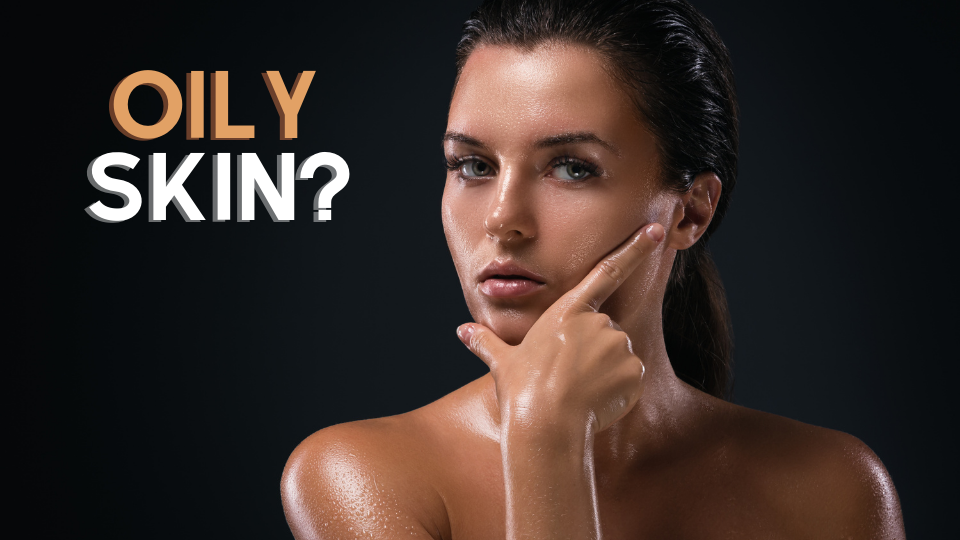We asked Dr. Aakriti Mehra, our in-house dermatologist and expert to help us decipher the various developments that have taken place in the field of dermatology last year and find the most impactful research, from an Indian perspective.
Dermatology update 2021: Top 12 developments in the field

2020 may not have been a great year for most, with the pandemic and the ensuing lockdowns and quarantines. That however, did not stop science and research. As we enter the year 2021, Here are Dr. Aakriti’s selections for the top 12 scientific developments in dermatology from the year gone by, that could also impact the way we deal with skin conditions in India.

1. New picosecond laser to treat pigmentary disorders in darker skin types
This is a big one. Darker skin types tend to tan more easily. The thing with lasers is that they target pigment molecules to reverse the condition. With darker skin, the results have always been tougher.
The new study showed that the 730 nm picosecond laser was effective in treating pigmentation in darker skin types and also showed significant improvement in a single sitting.
Read More: Treatment of pigmentary disorders
KEY TAKE-AWAY: This is a very significant development for darker Indian skin tones. We will have a new more effective tool compared to the currently used Q-switch laser (which works, but why won’t we want something that works even better).
When commercially available, you can definitely expect us to add the tech. to our dermatology arsenal.

2. Tralokinumab BLA license accepted by USFDA to treat moderate to severe atopic dermatitis in adults
Atopic dermatitis is an auto-immune condition and there is currently a void in improvement of the quality of life of people effected by it. The new biological’s BLA (biologics license application) has been accepted by the FDA but a final decision on approval is expected in the second quarter of 2021.
Tralokinumab is a human monoclonal antibody which works by offsetting the interleukin-13 cytokine. This cytokine has been identified by past research as one of the main contributors to the inflammation seen in atopic dermatitis.
You can read more about the current modalities for treatment of eczema here.
Click here for further reading on the license acceptance of Tralokinumab
KEY TAKE-AWAY FROM INDIAN PERSPECTIVE: Although not expected to come to India too soon even after a USFDA approval, there is a new tool on the horizon that can help improve the quality of lives of Indian adults suffering from moderate to severe atopic dermatitis.

3. SKINMAGINE comes to fruition, will aid studying the mechanisms of skin aging
A collaboration between the dermatologists of MediUni Vienna and biotechnologists from the Vienna university of technology, SKINMAGINE (Multimodal imaging of aging and senescence of the skin) is partially funded by the beauty industry behemoth, Chanel.
Our skin is one of the first organs in the body to show signs of aging and it is also one of the most visible signs. The project aims to decipher the science behind the signs of aging and to understand how environmental factors affect the process.
You can learn more about the anti-aging treatments currently available by clicking the link.
KEY TAKE-AWAY: The science of aging has continued t be a bit of a mystery.
We currently tackle the signs of aging by either acting on the underlying muscles causing wrinkles, adding lost volume externally with fillers or with treatments such as HIFU to promote the growth of connective tissue.
Detailed research could help in preventive as well as novel methods to tackle the signs of aging.

4. Dermatology study shows that skin may help predict future heart problems
The connections between presentation on skin and other systemic problems has been well known. Like the connection between acanthosis patches and diabetes, or the recent link found between ichthyosis and liver disease.
This new study by Dr. Uitto and his colleagues pointed out that a genetic mutation that leads to fragile skin, thickened skin on palm and soles and hair loss extending to the eyelashes and eyebrows in infancy and childhood, is also linked to the heart disease, arrhythmogenic right ventricular cardiomyopathy in young adulthood.
KEY TAKE-AWAY: This is more for the dermatologist community. We need to keep abreast with the latest research and make sure that we don’t skip correlations with systemic diseases.

5. New research shows a link between finasteride use and suicidality
This is an important one. Finasteride is a popular drug used to treat male pattern baldness. The major side effect that has been kept in mind with the use of the drug has been the small chance of temporary loss of libido.
However, a new report that collated multiple case studies found a signal correlating suicidal ideation, depression and anxiety among young males using finasteride for hair loss. This was for males aged 45 and below. Although not a confirmatory study, it does signal that we need to be more careful while prescribing the drug.
Related reading: PRP for hair loss treatment
KEY TAKE-AWAY: As practitioners, dermatologists must take psychiatric history before prescribing finasteride and avoid it in patients they may deem to be at risk.

6. New biomaterial that significantly reduces scar formation
The microporous annealed particles developed from collaboration between researchers from UCLA and Duke university is a biomaterial that dissolves on its own during wound healing and also showed that using the material leads to better healing and stronger skin.
The study showed that Injectable hydrogels can provide a scaffold for in situ tissue regrowth and regeneration. The shortcoming of degradation can be overcome with an injectable, interconnected microporous gel scaffold assembled from annealed microgel building blocks.
In vivo, the scaffolds facilitated cell migration that resulted in rapid cutaneous tissue regeneration and structure formation within five days.
Related reading: Current methods for treatment of acne and other scars
KEY-TAKEWAY: There is a new method coming to help with better wound healing to avoid scars. It may not reach us any time soon, but it is definitely on the way.

7. Psoriasis has greater impact on the patient’s mental health than skin
A new study from Sweden has shown that other somatic diseases associated with psoriasis have even more impact on their mental health than their skin symptoms.
Psoriasis is a life-long disease and is often associated with diabetes and heart diseases. The new study showed that patients of psoriasis also have their mental health impacted and can suffer from anxiety and depression.
KEY TAKE-AWAY: The study in the field of dermatology, again brings focus on treating psoriasis with a holistic, systemic approach.

8. High bacterial levels in Lupus
A study published in the journal of investigative dermatology shows that half of the skin lesions in patients of Lupus shows the presence of staphylococcus aureus bacteria.
Why this is significant is because these bacteria also play a role in breaking down the normal barrier function of the skin and could also lead to systemic infections.
Lupus can affect various systems in the body but often, the first visible presentations are seen on the skin as rashes. The disease can also affect the joints, kidneys etc. when it presents in a severe form. It affects mostly women in the reproductive age group.
KEY TAKE-AWAY: The study paves the way for a role of topical antibiotics improving the quality of life of patients with Lupus rashes.

9. Sunscreen ingredients absorbed into blood
Published in JAMA, a new study looked into the blood absorption of 6 chemicals found in sunscreens. These were tested from various formulations including lotions, aerosol sprays and pump sprays from four brands.
The 6 chemicals were:
- Avobenzone
- Oxybenzone
- Octocrylene
- Homosalate
- Octisalate
- Octinoxate
All 6 were found to be in higher levels in the blood stream than recommended by the USFDA.
This does not in any way mean that people need to stop applying sunscreen, it is very important in UV protection and for SPF. It does however indicate that sunscreens in general probably need to go through more detailed safety studies for long term effects.
KEY TAKE-AWAY: Using sunscreen is very important, but ideally, check with your dermatologist about the brand you are using and make sure that they are okay with it.

10. First injectable to tackle cellulite approved by USFDA
For the treatment of moderate to severe cellulite in the buttocks of adult women, the USFDA has approved ‘collagenase clostridium histolyticum-aaes’ (QWO).
This is quite a breakthrough in medical aesthetics. The injectable combines two kind of collagenases produced naturally by the clostridium histolyticum bacteria. It works by degrading type 1 & type 3 collagen that helps the skin get an improved appearance and texture.
You can read more about it here: https://www.qwo.com/
KEY TAKE-AWAY: We can’t wait for them to come to India! This is a first of its kind product to tackle cellulite in adult women. The launch in America is in early 2021

11. Botulinum toxin could benefit rosacea patients
At an online forum of the American association of dermatology, it was formally presented that botulinum toxin can be beneficial for addressing flushing and erythema in patients with refractory rosacea.
Dr. Hema Sundaram presented her findings. This helps in tackling lifestyle issues in a common condition. There are however safety factors that have to kept in mind and this treatment should be provided only by trained dermatologists.
You can read about the current modalities for dealing with rosacea here.
Read about: Botulinum treatment in dermatology
KEY TAKE-AWAY: This is an already available tool that can now be used to help patients with refractory rosacea lead a better quality of life

12. Clascoterone 1% topical cream approved by USFDA for acne
This is a new drug that has been approved by the USFDA for use in the treatment of acne vulgaris in patients 12 years and older.
It is an androgen receptor inhibitor and restricts sebum production and inflammation caused by androgen hormones.
It therefore uses a completely new approach to tackle the symptoms of acne and could be used in combination with antibiotics and could also help reduce the use of antibiotics used to deal with the condition.
You can read more about it here
Related reading: Treatment of Acne in Mumbai
KEY TAKE-AWAY: Once the drug comes to India, it adds to the dermatologist’s arsenal in tackling acne, one of the most common skin complaints.
That wraps up what the year gone by brought in terms of top new developments in dermatology.





